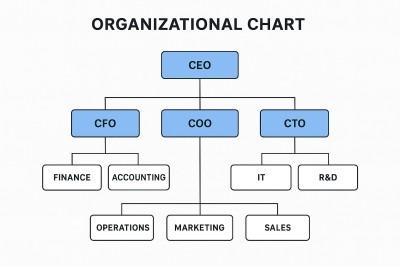Understanding the Apple Org Chart: Structure, Insights, and Practical Applications

For anyone interested in corporate structures, leadership dynamics, or strategic management, exploring the Apple org chart offers a fascinating glimpse into how one of the world’s most influential companies operates. The Apple org chart not only illustrates reporting lines and leadership hierarchies but also provides insights into organizational priorities, innovation management, and decision-making processes. This article will guide you through understanding Apple’s organizational structure, why it matters, and how to leverage this knowledge in professional contexts.
What Is an Org Chart?
An org chart, or organizational chart, is a visual representation of a company’s structure. It shows how different departments, teams, and roles are connected and outlines reporting relationships among employees and management. For large corporations like Apple, an org chart is essential for understanding accountability, workflow, and communication channels.
By examining an org chart, stakeholders—from investors to employees—can quickly identify leadership roles, key functional areas, and interdepartmental connections. In Apple’s case, this becomes especially relevant given its complex ecosystem of hardware, software, and services.
Apple’s Organizational Structure: Key Features
Apple has historically employed a functional organizational structure. Unlike a divisional or matrix structure, where product lines or geographies dominate reporting lines, Apple organizes around specific business functions, such as:
-
Design & Innovation: Focused on product aesthetics and user experience.
-
Engineering & Technology: Oversees hardware and software development.
-
Operations & Supply Chain: Manages production, logistics, and supplier relationships.
-
Marketing & Retail: Handles branding, advertising, and sales channels.
-
Services & Corporate Functions: Includes legal, finance, HR, and customer service.
This functional approach allows Apple to maintain a strong focus on expertise and excellence within each domain. It also supports faster decision-making by reducing cross-functional bureaucracy.
Executive Leadership
At the top of Apple’s org chart is the CEO, who provides overall strategic direction. Reporting to the CEO are senior executives responsible for each major function. Notably, Apple’s leadership style emphasizes collaboration among top executives, ensuring that product design, technology, and marketing align with the company’s long-term vision.
Key roles typically visible on an Apple org chart include:
-
Chief Executive Officer (CEO)
-
Chief Operating Officer (COO)
-
Senior Vice Presidents (SVPs) for design, hardware engineering, software engineering, marketing, and retail operations.
-
Chief Financial Officer (CFO)
-
Chief Legal Officer (CLO)
This structure highlights Apple’s focus on specialized expertise while ensuring that strategic decisions are centralized at the executive level.
Why Understanding the Apple Org Chart Matters
Studying Apple’s org chart offers several practical benefits:
-
Business Strategy Insight: The chart reflects how Apple prioritizes its resources. For example, the prominent position of design and engineering leaders shows the emphasis on product innovation.
-
Career Mapping: Professionals seeking employment at Apple can understand potential career paths, identify key decision-makers, and align skill development accordingly.
-
Competitive Analysis: Other tech companies can study Apple’s org chart to benchmark their own structures or identify potential gaps in leadership focus.
-
Organizational Behavior: Analysts can explore reporting patterns, departmental interdependencies, and leadership dynamics to predict decision-making behavior.
Practical Tips for Using an Org Chart
-
Identify Decision-Makers: Pinpoint who holds authority in specific areas to better approach collaboration or negotiation.
-
Map Workflow: Use the org chart to understand who contributes to product development or service delivery.
-
Spot Opportunities for Improvement: By analyzing reporting layers, companies can find areas to streamline operations or enhance communication.
-
Cross-Functional Insights: Recognize how Apple integrates design, engineering, and marketing, which can inspire similar strategies in other organizations.
Trends Reflected in Apple’s Organizational Approach
Apple’s org chart also reveals industry trends in tech company management:
-
Flat yet Functional: Apple maintains relatively flat reporting layers for faster decision-making, while still emphasizing function-specific expertise.
-
Innovation-Centric Leadership: Product design and engineering roles hold significant weight, highlighting the company’s commitment to creativity.
-
Global Operations Integration: Senior roles overseeing supply chain and operations indicate the strategic importance of global logistics in technology businesses.
These trends are increasingly relevant across sectors where speed, innovation, and customer experience drive competitive advantage.
Common Misconceptions About Org Charts
Some professionals assume org charts are rigid or purely hierarchical. In reality:
-
An org chart represents formal reporting but does not always show informal communication channels.
-
Companies like Apple rely on cross-functional collaboration, meaning innovation often occurs outside strict lines of authority.
-
Org charts evolve; Apple’s structure today may differ from a few years ago as the company adapts to new markets and technologies.
Understanding these nuances ensures a more accurate reading of organizational dynamics.
Conclusion
The Apple org chart is more than a simple diagram—it’s a window into how a leading tech company manages expertise, innovation, and global operations. By studying the chart, professionals can gain insights into leadership priorities, workflow, and organizational strategy. Whether you are a business analyst, aspiring Apple employee, or an organizational researcher, analyzing this chart provides valuable lessons on structure and strategy in the corporate world.
- Art
- Causes
- Crafts
- Dance
- Drinks
- Film
- Fitness
- Food
- Jogos
- Gardening
- Health
- Início
- Literature
- Music
- Networking
- Outro
- Party
- Religion
- Shopping
- Sports
- Theater
- Wellness


